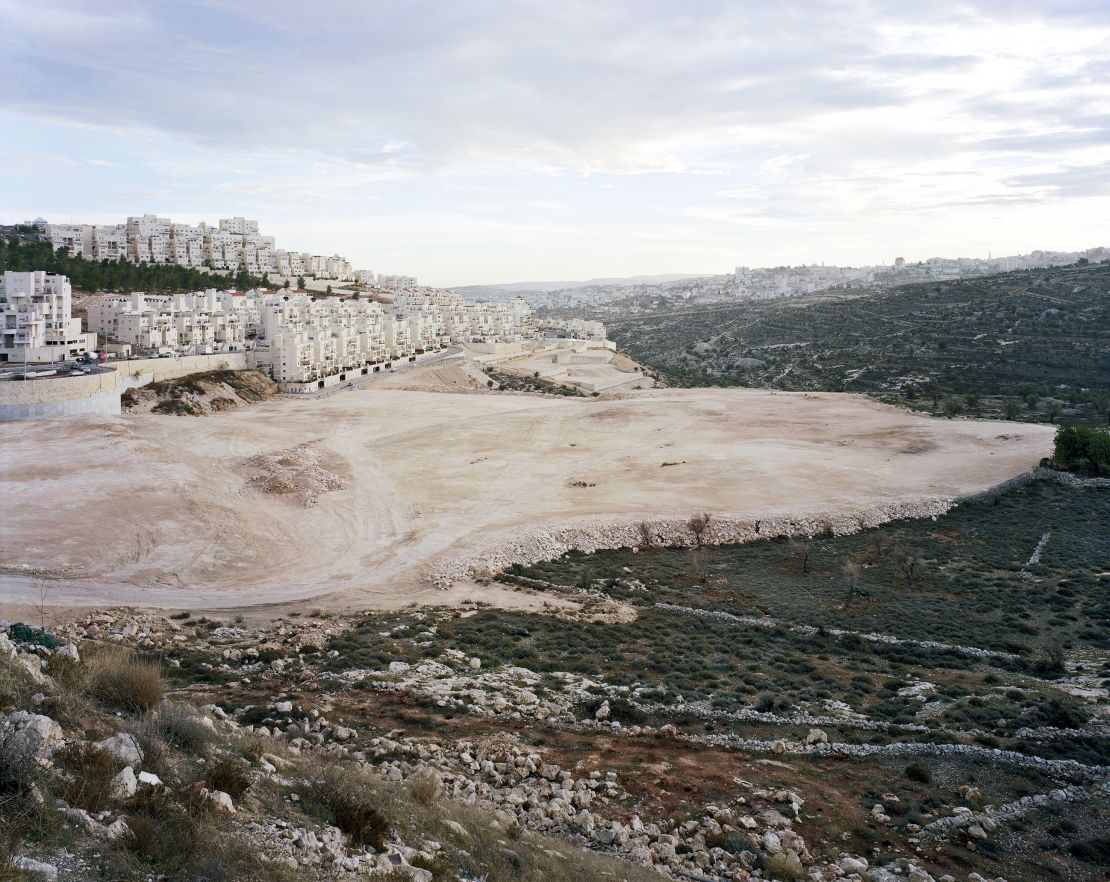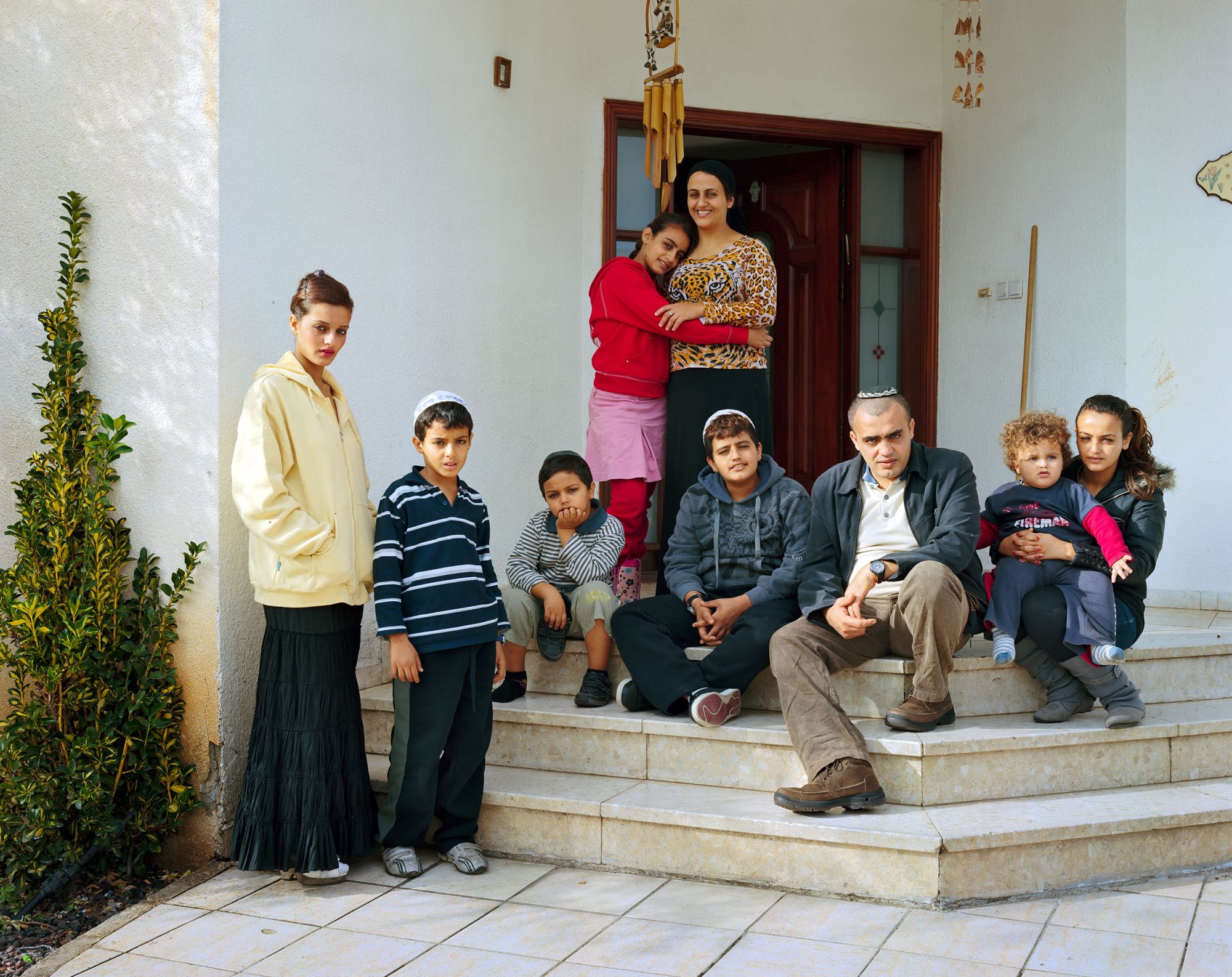Editor’s Note: This month supermodel and designer Claudia Schiffer is CNN Style’s guest editor. She’s commissioned a series of features around the theme of icons and iconic imagery.
Between 2009 and 2014, acclaimed German photographer Thomas Struth made eight trips to Israel and the West Bank. He took about 2,000 snapshots with a digital camera of scenes he found interesting, then around 60 photographs in large format.
Out of those, he selected just 18, his ultimate summary of a five-year project that is now on show for the first time in its entirety at the Aspen Art Museum.
“Photography is very much about editing and reducing to the number of works that is really necessary,” he said in a phone interview. Struth is best known for his museum photographs – in which the focus is on the spectators – his black and white street photography and his distinctive family portraits. In 2011 he took the diamond jubilee photograph of the Queen of England and the Duke of Edinburgh for the National Portrait Gallery.
His latest shots, he argues, contain some of the sadness of the Israeli-Palestinian conflict but are free from a direct political message. “I think I come from a position of empathy for both sides, and also a critical tone that is not particularly evident as I’m not a journalist. I don’t believe in putting the fingers in the wound too obviously; it makes things too easy for whoever is viewing my work.”
Thomas Struth
No expectations
Struth went to the region as one of the participants in a larger project titled “This Place,” started by photographer Frédéric Brenner, notable for a quarter century of work on the Jewish diaspora. But it took some convincing. “Brenner came to my studio on his 50th birthday, which I found unusual. We got along very well and I decided to participate,” said Struth.
After an initial stay of a few weeks, Struth went back seven more times, spending up to three weeks per trip and exploring, among others, East Jerusalem, Tel Aviv, the Golan Heights, Ramallah, Al-Khalil/Hebron, Nazareth, and Negev. The last trip was done exclusively to re-take a specific photo of the Israeli settlement of Har Homa, as he was unhappy with what he already had.

Struth had not visited Israel before the project, although his parents had, and his brother had worked in a kibbutz, a type of Israeli communal settlement based on agriculture. “I didn’t have any expectation other than looking forward to finally getting there after having witnessed the conflict between Israel and Palestine for all my life in the news, but I was fairly open otherwise,” he said.
“But I was a bit nervous, because I was wondering what I would be doing, what my choices would be. I had never worked before in a place of conflict.”
Two families
The exhibition includes two family portraits, one depicting eight Bedouin men in Negev, the other a young family of nine in Rehovot. The presence of these two photographs, literally full of people, is in stark contrast with the rest of the images, where people are barely seen at all. It’s an element of divergence that stems from the more general change in approach that Struth has applied to this show.
“In my body of work I usually have one artistic concept that I apply to many different locations, but here I did the opposite, I applied several concepts I’ve done before on one location. There’s family portraits, there’s science and technology, there’s architectural photographs, some landscape photography. This is something I’ve never done before,” he said.
The works, which encompass street view, technological research, landscapes, holy sites and private yards, are designed to be scrutinized, according to curator and Aspen Art Museum Director, Heidi Zuckerman. “For me, art has always been about an opportunity to pay attention. The precision and clarity of Thomas Struth’s photographs encourage close looking. His images of Israel and Palestine offer a different view of places and people that perhaps we thought we knew. Yet they also reveal how much more complex these things truly are,” she said in an email interview.
“With the self-reflection that art allows, we can often understand ourselves, and what we value, differently.”
Thomas Struth is on show at the Aspen Art Museum through June 10, 2018.












